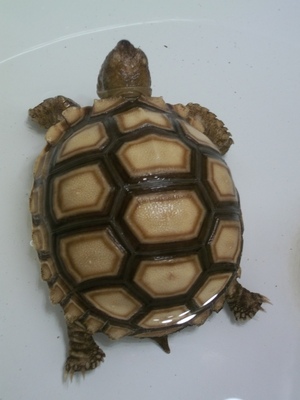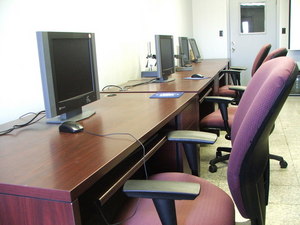The sulcata is an interesting tortoise that roams the desert landscapes of many regions. They are acclimated to harsh conditions and can survive on a relatively small food supply in the wild. As pets, these tortoises can adapt to most conditions, but prefer an environment that is representative of their natural habitat. To keep the sulcata comfortable, it is important to provide an adequately sized enclosure, proper lighting, and a natural temperature range.
Enclosure
A habitat for a Sulcata tortoise can be constructed indoors or outdoors. Eventually, all tortoises raised indoors will have to be moved outdoors because they will outgrow the enclosure. To start out, it is recommended to house a young sulcata in a 20 gallon long tank. Expect the tortoise to gain about five to six grams every two to three weeks, and grow three to four inches per year. By the second year of owning the tortoise, it will require a 75 gallon tank. By the third or fourth year, the sulcata is too large to be kept indoors, and it should be housed outdoors.
Perfect living conditions for a sulcata tortoise requires a considerable amount of back yard space. A 30 foot by 30 foot enclosure is recommended. It should be covered with ample grass so that the tortoise can graze. A modified shed, either constructed from a dog house or green house, should provide shelter from the elements.
Lighting Requirements
Indoor enclosures should be fitted with ultraviolet lights to promote the synthesis of vitamin D. The lights should emit UVB, and the recommended UVB exposure should be at least seven percent. The bulbs should be replaced once a year, even if they are still emitting light, because the UV exposure drops significantly with time.
Sulcata tortoises that are kept outdoors should have contact with natural sunlight. If the tortoise remains inside the shed for prolong periods of time during the day, install a UV light inside the shed.
Temperature
The temperature in sulcata tortoise habitats should be regulated. Indoor enclosures should have a basking area that reaches 100°F and a shaded area that is around 70°F. Use heat lamps and thermometers to regulate the temperature indoors. Outdoor tortoise sheds should be heated with a heat mat. Place it on the ground inside the shed and use an infrared temperature gun to measure the surface temperature in the shed. Then regulate the temperature with the heat mat controller.
Water Bowls and Supplemental Humidity Sources
A portion of the indoor enclosure should be lined with a substrate consisting of a moisture-retaining substance, such as sphagnum moss. This helps elevate the humidity in the enclosure and prevents dehydration. A water supply should be provided in the enclosure and it should be shallow so that the sulcata can climb in and out easily. This would be in addition to any bowls for drinking water and for feeding the sulcata .
Your sulcata tortoise will live a long and healthy life if it is kept in a proper habitat. Provide a large enclosure with adequate lighting and a comfortable temperature. Include a shed and heating mat if kept outdoors and a water bowl and spahagum moss substrate for indoor tanks. Be sure to adjust the housing requirements as the tortoise grows.
References:
“Sulcata Tortoise.” Premium Tortoises.
“Housing.” Sulcata Station
“Basic Care Information.” Sulcata Station






